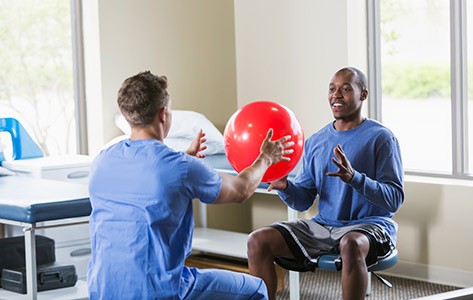Learn Common Sports Ailments as well as Effective Recovery Strategies for Sports Players
Wiki Article
Sports injuries are common among athletes of all age groups and skill levels. These traumas can happen in various forms, including ligament injuries, muscle injuries, breaks, and tendonitis. Understanding the kinds of injuries that can happen during sports events is essential for not only avoiding and treatment. Sprains, for example, entail the overextending or rupturing of connective tissues, which connect skeletal structures at a articulation. Strains, on the other hand, affect muscle tissues or tendon structures, which connect muscle tissues to skeletal structures. Identifying these traumas early can help sportspeople obtain suitable care and come back to their activity more quickly.
One of the most frequently seen injuries in athletics is the foot sprain. This injury often occurs when an athlete lands awkwardly or twists their foot during a match. Symptoms of an foot sprain include pain, swelling, and difficulty walking. Prompt care typically includes the R.I.C.E. approach, which stands for Rest, Cooling, Wrapping, and Lifting. This method helps minimize swelling and discomfort. In more severe situations, physical treatment may be necessary to restore power and flexibility to the foot before going back to sports.
Another common trauma is a muscle injury, which can happen in all athletic activity that requires quick movements or heavy lifting. Sportspeople may experience a muscular injury when they extend a muscular tissue too far or when they apply too much force. Symptoms include sharp pain, inflammation, and muscle spasms. Rehabilitation for muscle injuries often includes gentle stretching and strengthening exercises. Slowly increasing activity levels is crucial to avoid recurrence. Athletes should collaborate closely with a rehabilitative specialist to develop a safe and More Help efficient recovery strategy.
Tendonitis is another trauma that can impact sportspeople, particularly those who participate in repetitive motions, such as joggers or aquatic athletes. This condition happens when a tendon structure, which links muscular tissue to skeletal structure, becomes swollen. Common areas involved by tendon inflammation include the elbow, upper arm, and knee. Signs often include discomfort and rigidity, especially during activity. Care for tendonitis usually includes rest, ice, and pain-relief drugs. In certain situations, rehabilitative therapy may be recommended to enhance mobility and strength in the affected area.
Avoiding sports injuries is just as important as addressing them. Sportspeople can minimize their chance of trauma by heating up properly before activities, using the right gear, and maintaining good physical condition. Power conditioning and stretching exercises can assist prepare the body for the demands of athletics. Additionally, sportspeople should pay attention to their bodies and take breaks when needed. By understanding frequent athletic traumas and implementing effective recovery plans, sportspeople can stay healthy and participate in their favorite sports for years to come.
